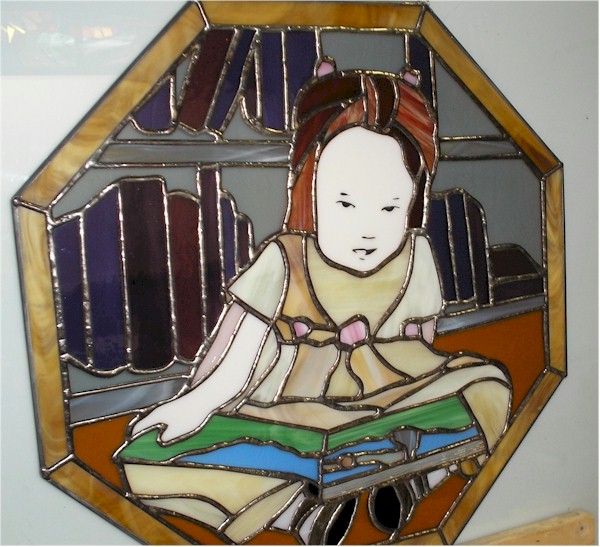How To Paint A Face On Stained Glass
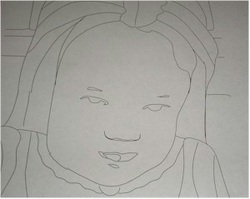
Before you can paint a face on stained glass, you need to sandblast the surface so the paint will stick.
Here's the pattern, which has been marked for painting, the cut lines are all drawn in.
Here's the pattern, which has been marked for painting, the cut lines are all drawn in.
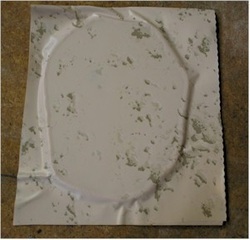
We cover the glass with contact paper. Often we use clear, but this colored stuff works fine and it shows up better for the photos.
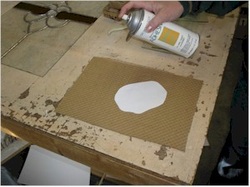
We use a spray adhesive applied to the back of the pattern to get it to stick.
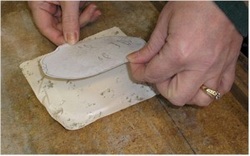
Then we have one chance to place it perfectly over the piece.
Because it's tricky to get in place, we sometimes blast the face first and cut and grind the face shape later so that the shape is perfectly aligned. But with large shapes we can usually get the pattern aligned properly.
Because it's tricky to get in place, we sometimes blast the face first and cut and grind the face shape later so that the shape is perfectly aligned. But with large shapes we can usually get the pattern aligned properly.
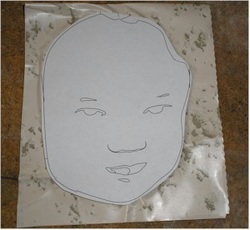
This shows the pattern in place over the contact paper covered glass.
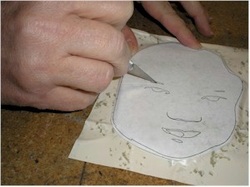
Then all the pieces need to be cut out and removed.
We use a brand new blade whenever we cut a face, a blade that has been used and left out over night will often be dull enough to tear the paper.
We use a brand new blade whenever we cut a face, a blade that has been used and left out over night will often be dull enough to tear the paper.
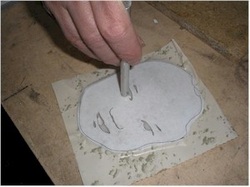
Then we use the back of the knife to rub and burnish down the contact paper so it won't come loose during blasting.
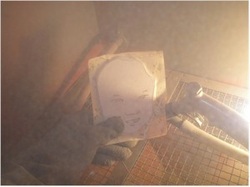
Then we put it in the blast cabinet and "fire away."
We use aluminum oxide now days instead of silica sand, in the hope that it's safer to work with.
We use aluminum oxide now days instead of silica sand, in the hope that it's safer to work with.
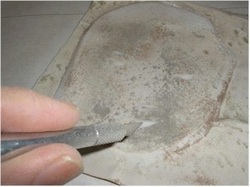
Then we take the knife and check every edge of the glass, we're looking for a ridge to the blasted area, to insure that we've blasted enough.
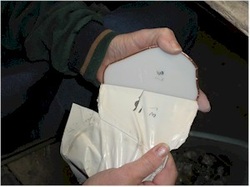
Then the resist is removed.
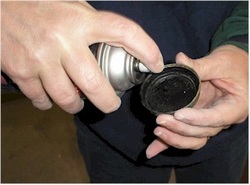
We spray a small amount of epoxy paint into a cap to paint the sandblasted area. More refined folks might purchase small bottles of paint.
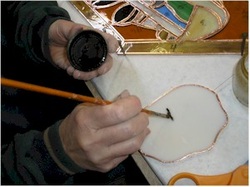
Then we add paint to the sandblasted areas with a medium painters brush.
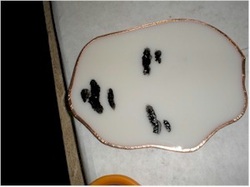
The paint is always globby and we sometimes need to add extra paint at the edges to make sure the hollow of the sandblasted areas are filled.
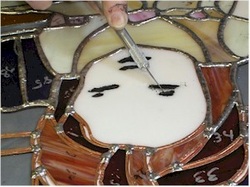
Once dry, we can scrap away the excess paint.
We've tried to spray the paint over the blasted area before removing the resist, but find we end up having to re-apply paint and going through all the steps we've shown anyhow.
We've tried to spray the paint over the blasted area before removing the resist, but find we end up having to re-apply paint and going through all the steps we've shown anyhow.
Here's the finished panel, a cute little girl reading a book.
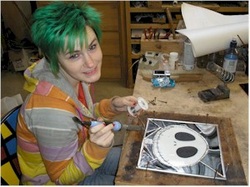
Katherine used this same technique on the Jack Skellington she made as a present in December. Her hair is purple now, she's a true artist! As I rewrite this her hair is pink!
To learn more from a different perspective, check out Eric Roberts website about glass etching, click here. His blog is at http://www.glassetchingsecrets.com/blog/.
To learn more from a different perspective, check out Eric Roberts website about glass etching, click here. His blog is at http://www.glassetchingsecrets.com/blog/.



